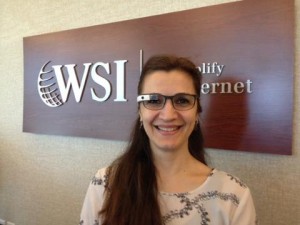A recent report from Generator Research http://www.generatorresearch.com/report/wearable-technology-2014/ has targeted the importance and potential of this new market. 225 pages long, a must-read for the avid techno fan, the report explains everything you need to know about the wearable technology market and who the key players are. And here we are talking major organisations from Apple and Google to Garmin and Nike and a whole host more.
Potential for Industry
So what do they know that we don’t? According to the report, the “wearable web will be the fuel that will power the mobile communications and mobile internet markets for decades to come.” Maybe an ambitious statement but currently the concept embraces smart watches and smart glasses . . . the potential, however, covers a myriad industry sectors, including body sensors and fitness equipment. The report says: “we project that the markets for smart watches, smart glasses and personal health and fitness products will be worth USD 8.0 billion in 2014 and USD 101.2 billion in 2018.”
Big Players
The fact that the big players are investing should be a sign. Intel has just bought the Basis Science company for ‘immediate entry’ into the wearable technology market. The merger is with Intel’s New Devices Group, which focuses on wearable computing and connected devices.
In a statement Mike Bell, Intel vice president for the New Devices Group said: “The acquisition of Basis Science provides immediate entry into the market with a leader in health tracking for wearable devices. As we accelerate our position in wearables, we will build upon this foundation to deliver products that bring people greater utility and value.”
And just in time for the tennis season, tennis players can now link up to Smash, http://www.gizmag.com/smash-wearable-tennis/32293/ a new device that monitors the consistency of players wearing it. Although in prototype mode, this is a lightweight wristband and application that allows tracking of statistics, such as number and type of shots, racket head speed, racket head momentum, amount of spin, wrist rotation, stroke trajectory, impact point consistency, and technique consistency.
Last week, Samsung unveiled Simband, http://www.pcmag.com/article2/0,2817,2458663,00.asp a prototype wearable health and wellness tracker capable of measuring a wearer’s heart rate, blood pressure, and more on a 24/7 basis. For the technophobes, Simband is an “open-platform, hardware reference design that, along with a cloud-based open software platform called the Samsung Architecture for Multimodal Interactions (SAMI).”
The value of the wearable technology market passed $4bn http://www.bbc.co.uk/news/business-26743537 last year, and is expected to more than double by 2018. On your marks, get set…
